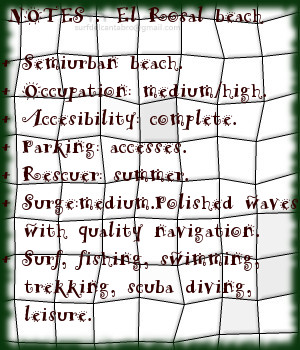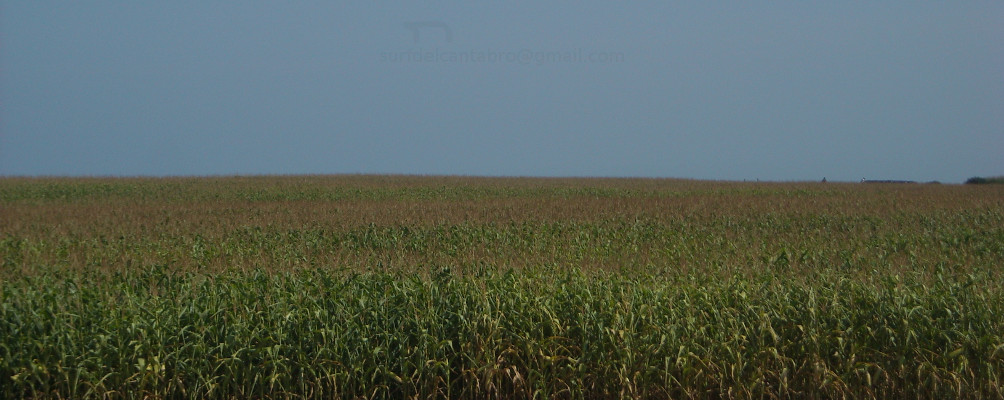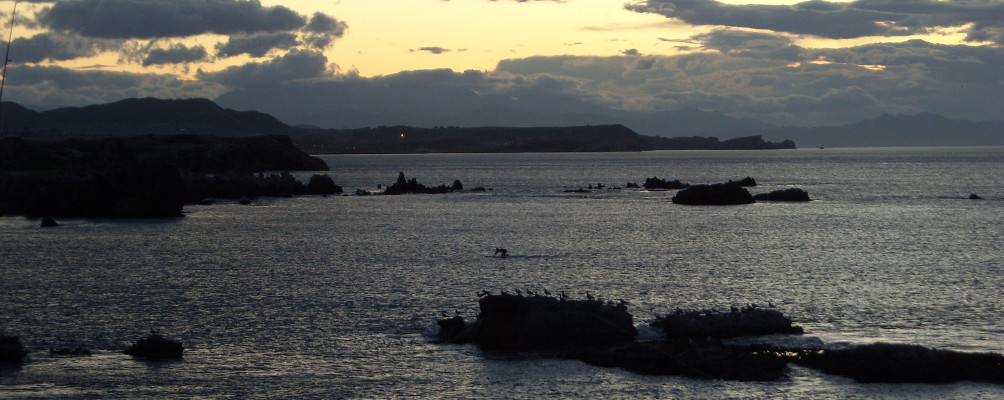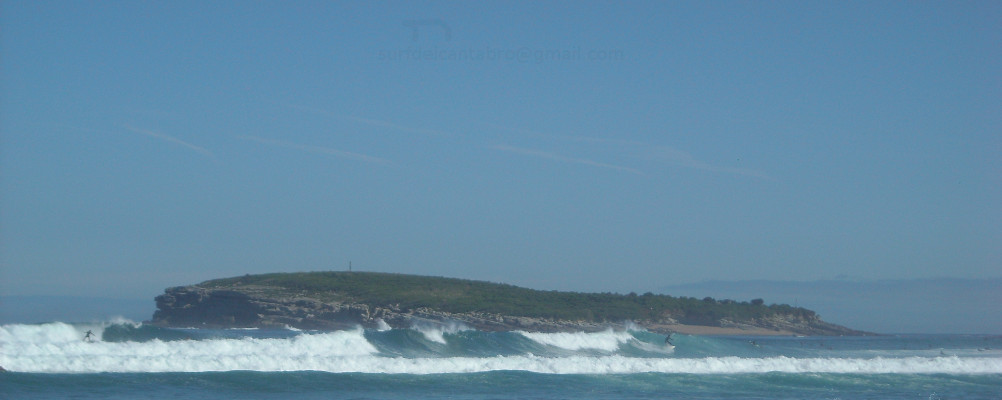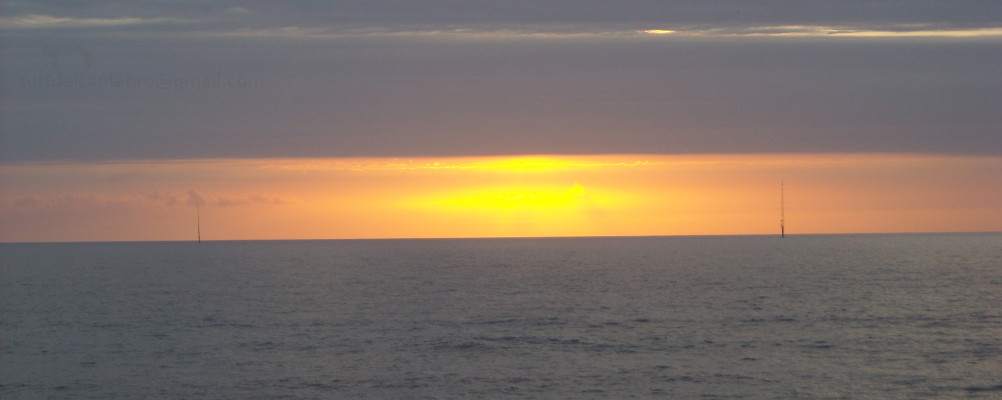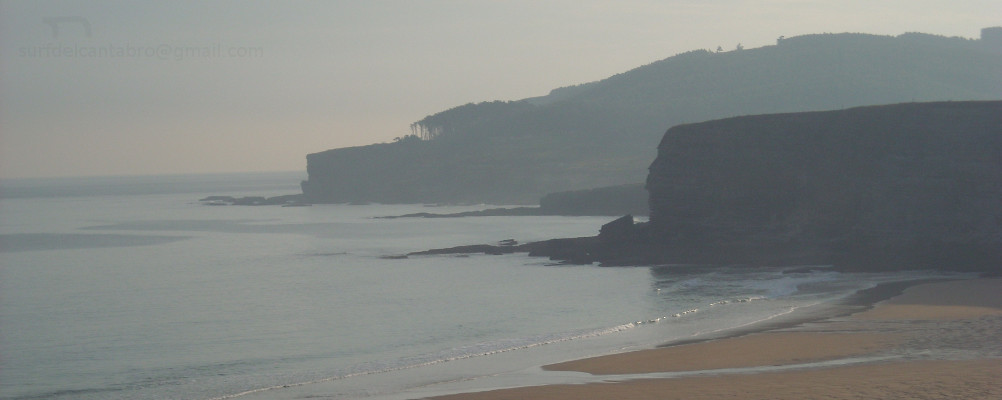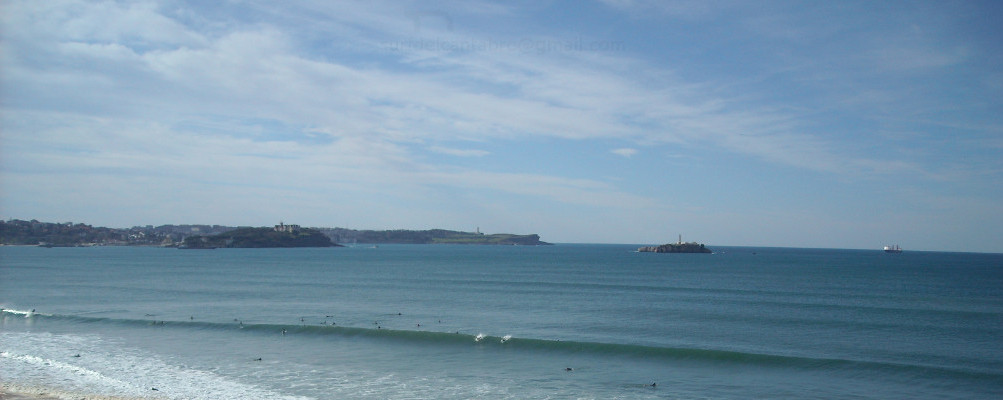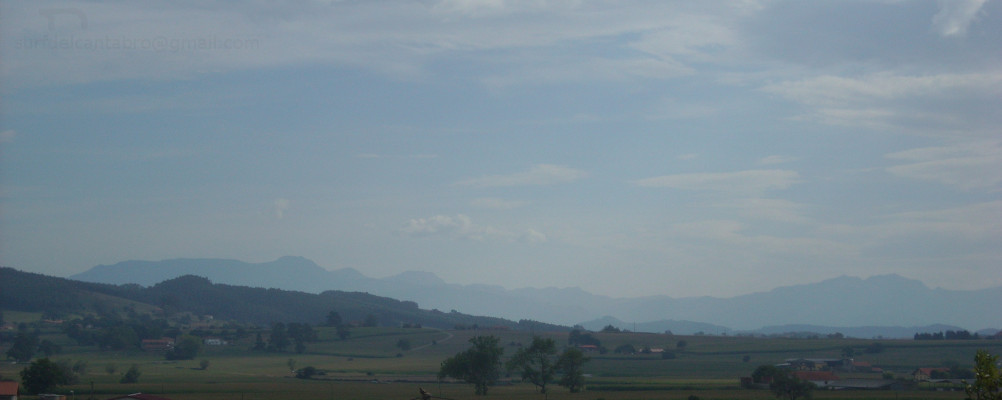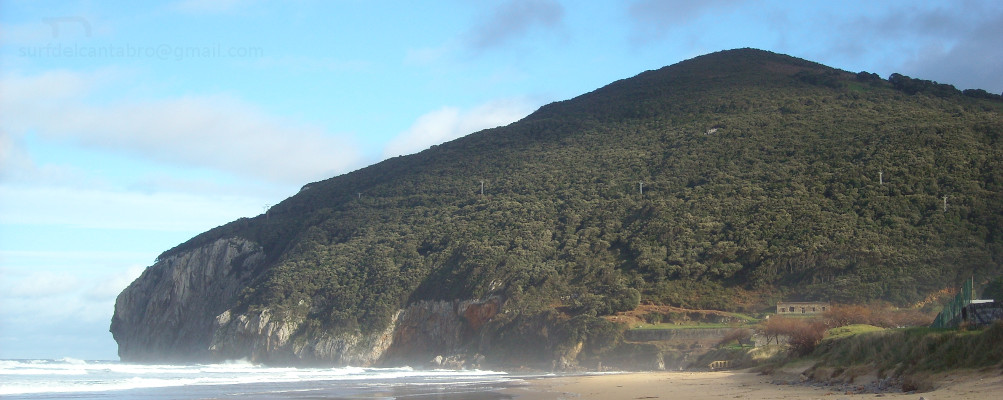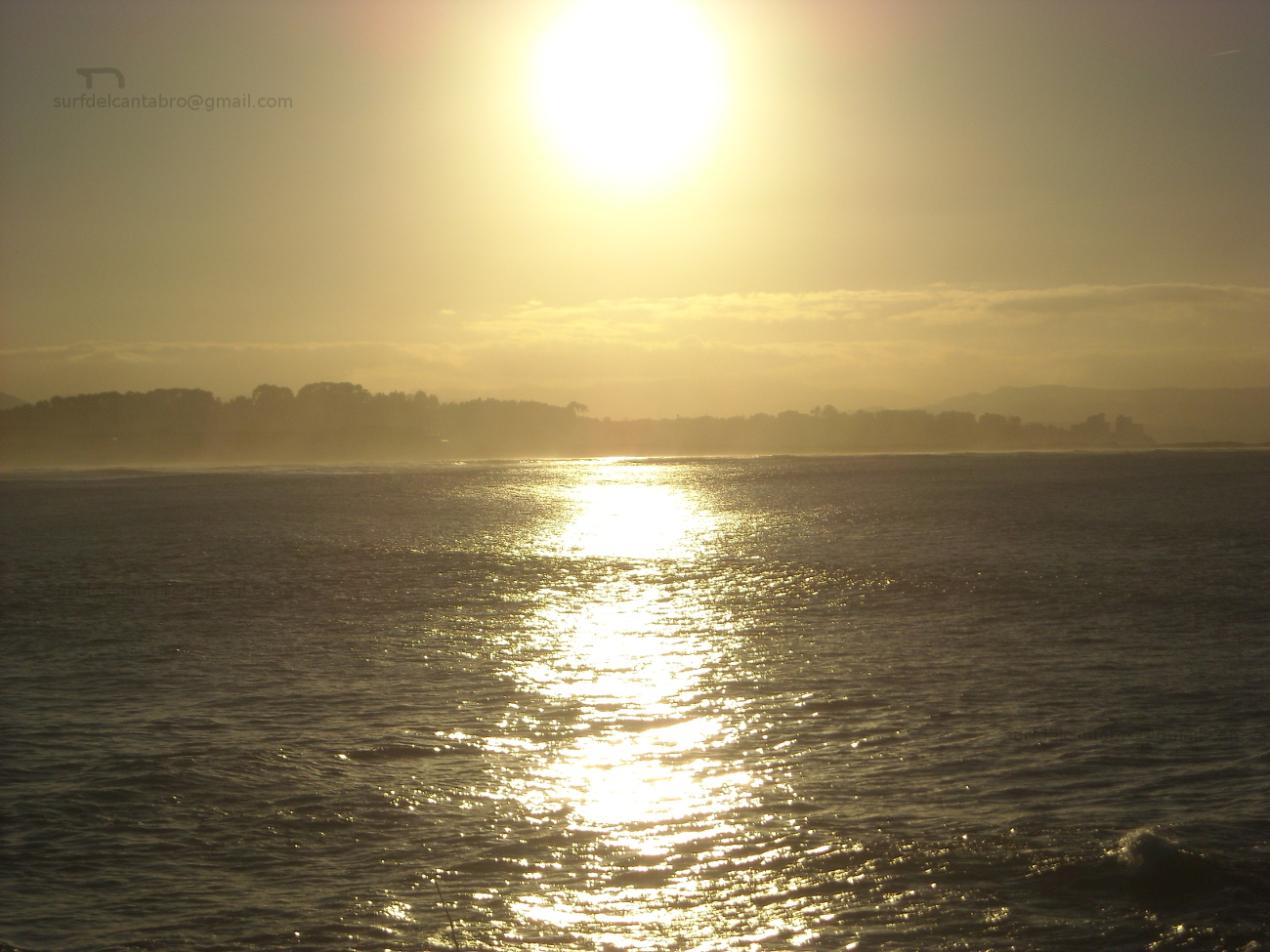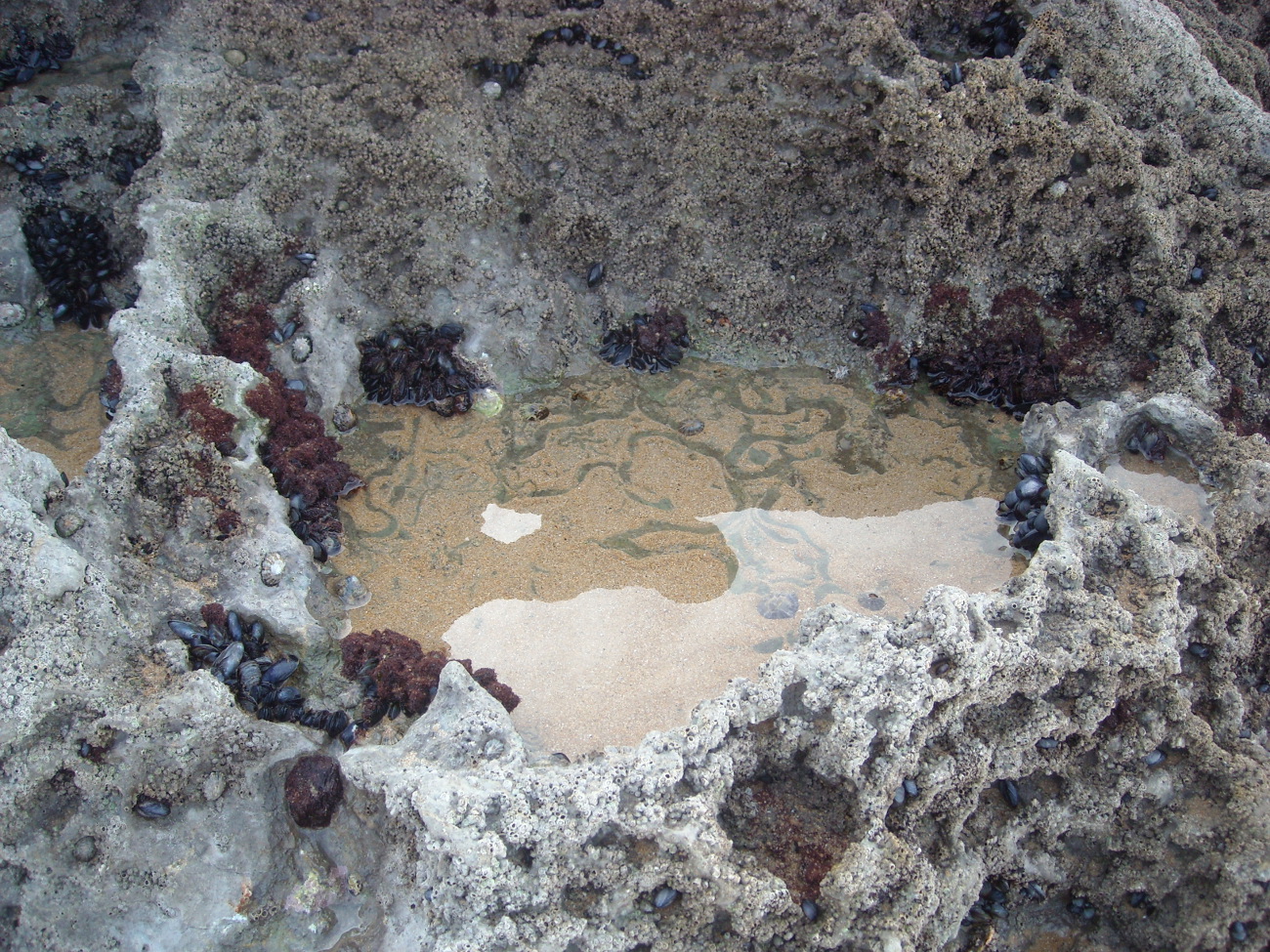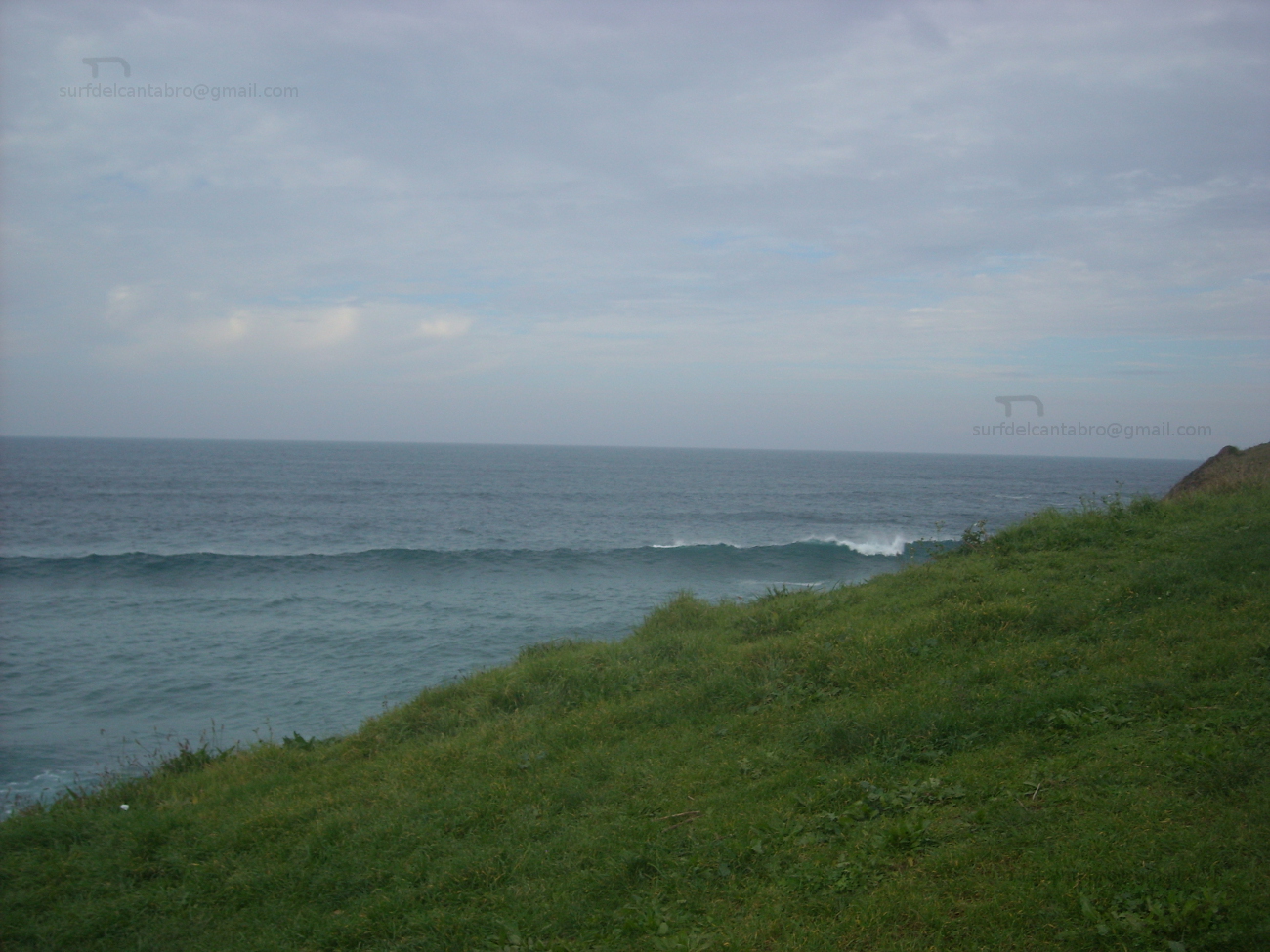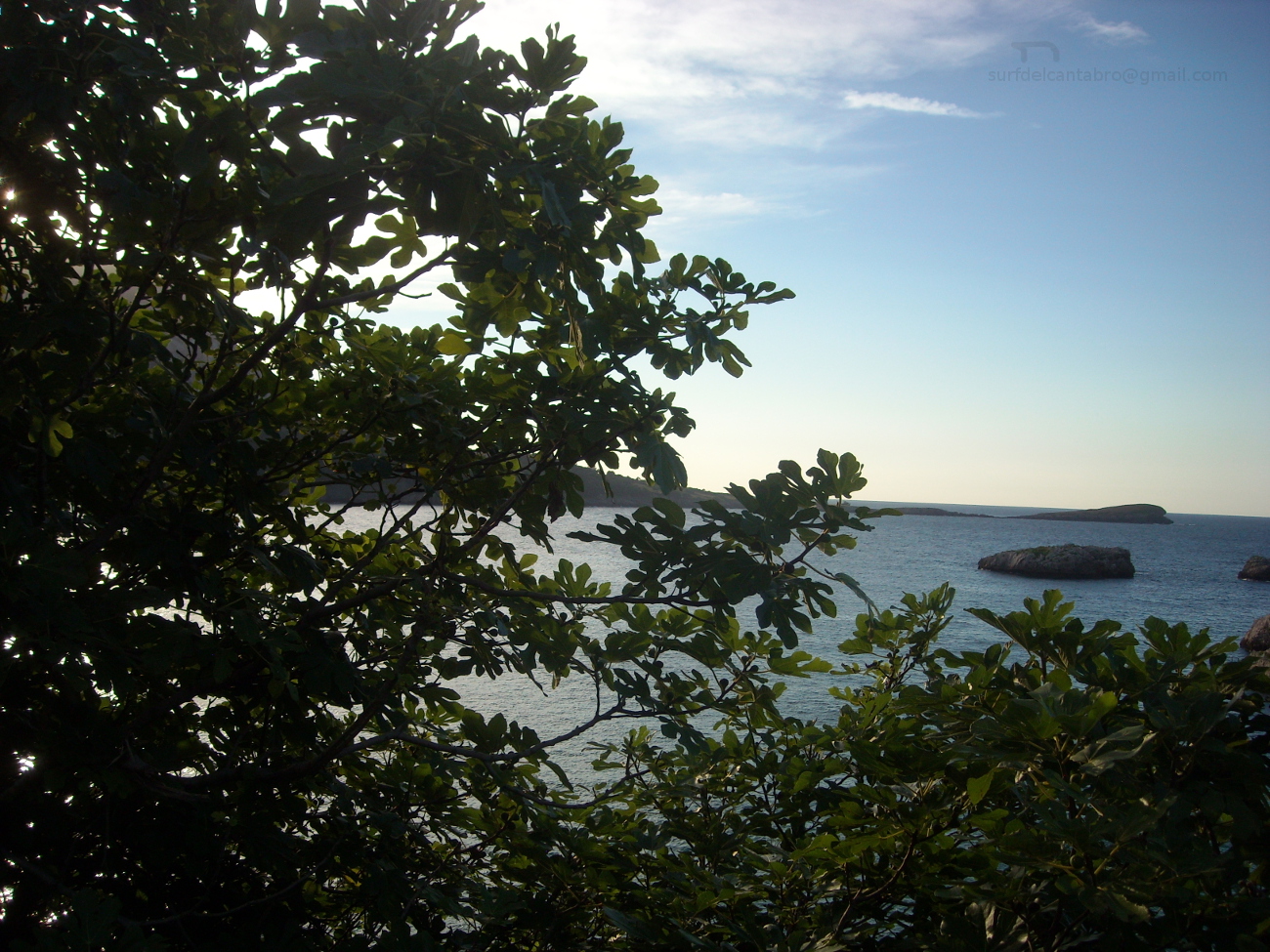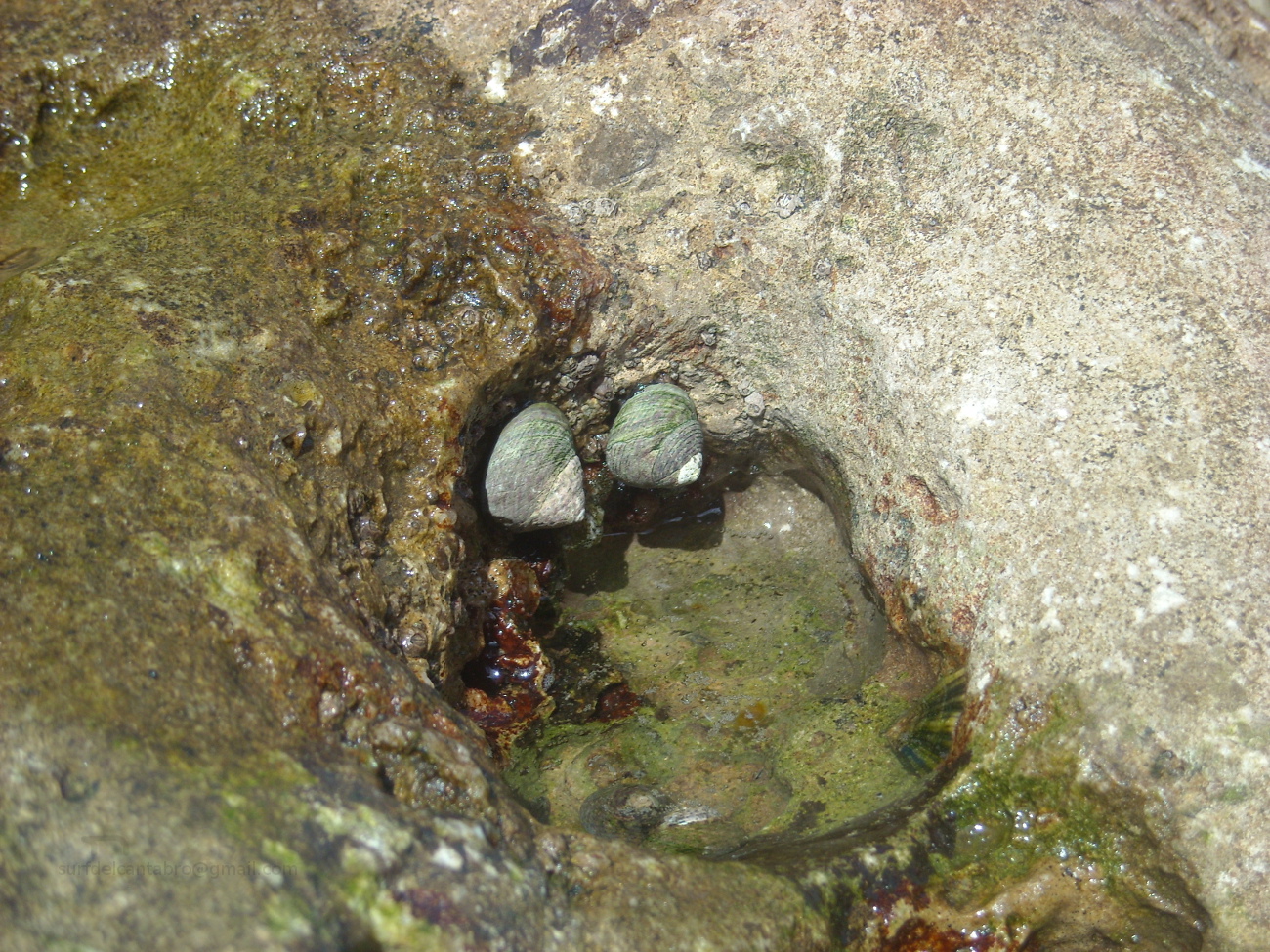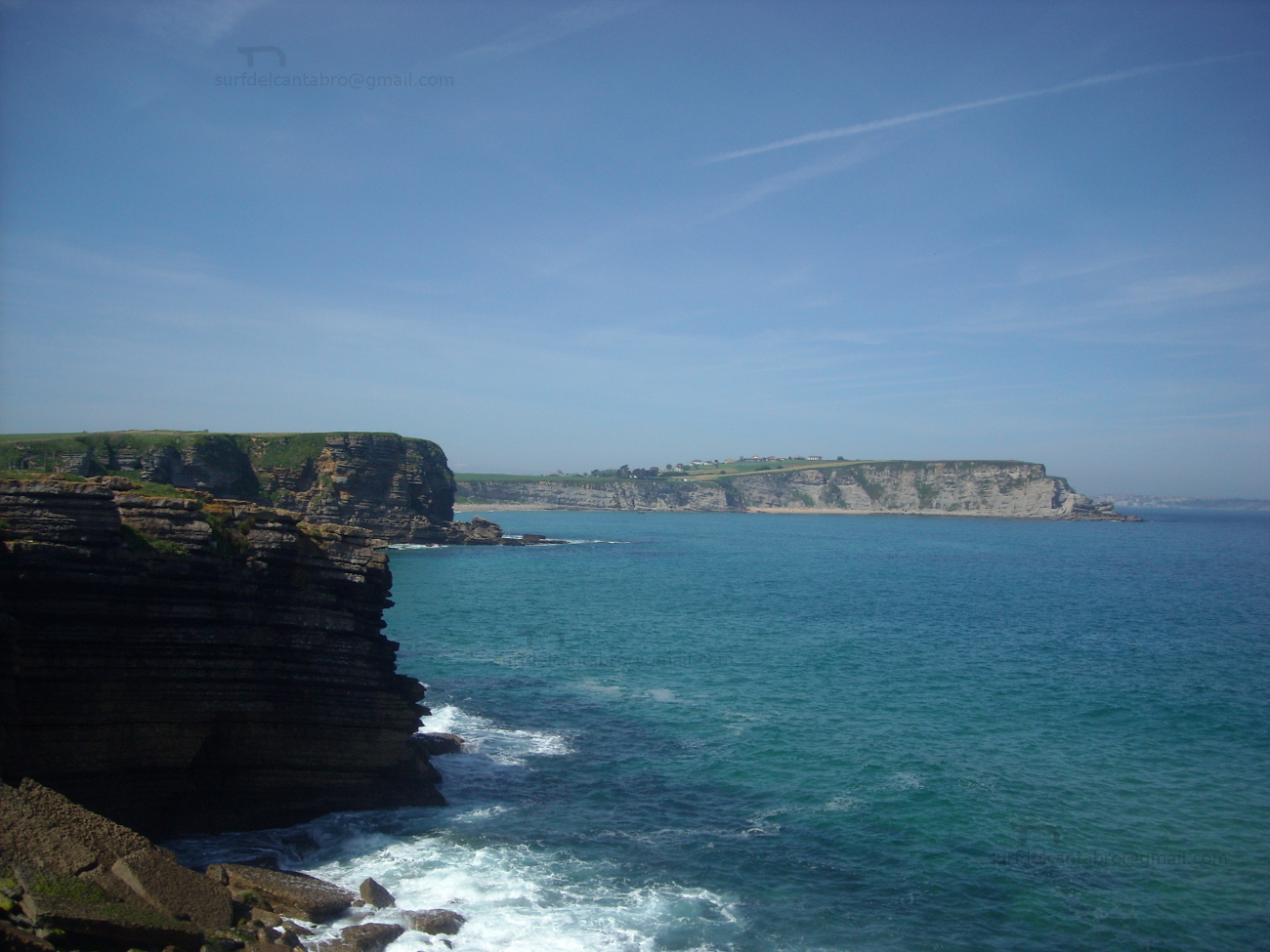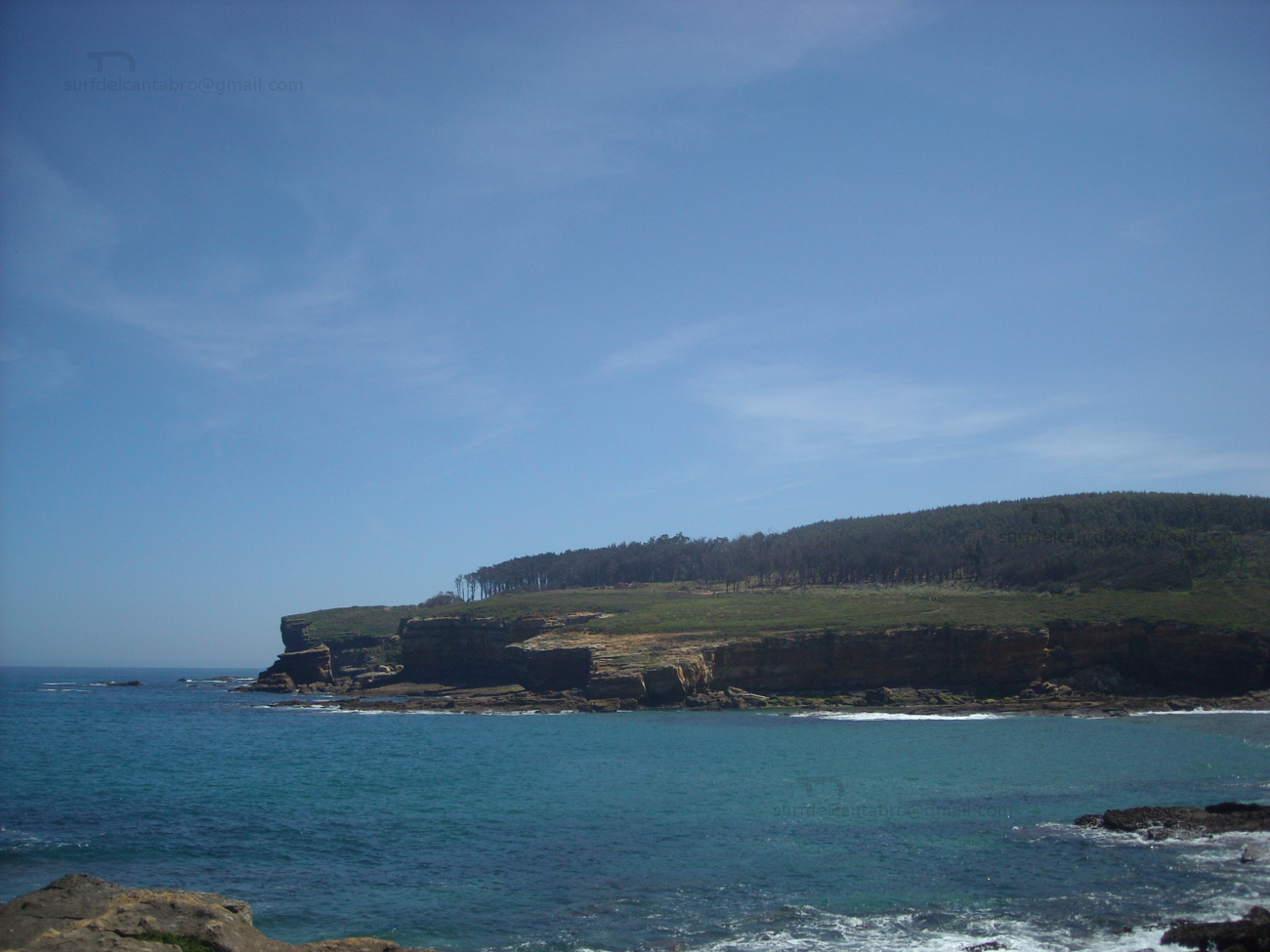Playa de Arenilla. Galizano
![]() La Playa de Arenilla está situada en la localidad de Galizano, perteneciente al municipio de Ribamontán al Mar. Emplazada en la costa central de Cantabria se ubica entre las playas de Langre y Galizano. Es una pequeña cala que apenas supera los 100 metros de longitud, su anchura en bajamar es de 50 metros y queda totalmente cubierta con la marea alta.
La Playa de Arenilla está situada en la localidad de Galizano, perteneciente al municipio de Ribamontán al Mar. Emplazada en la costa central de Cantabria se ubica entre las playas de Langre y Galizano. Es una pequeña cala que apenas supera los 100 metros de longitud, su anchura en bajamar es de 50 metros y queda totalmente cubierta con la marea alta.
Arenilla en su mitad contigua al mar se compone de arenilla gruesa, con cuerpo, al contacto con el pie se mastican las pisadas. Su otra mitad, situada bajo el acantilado y con forma de U, está repleta de rocas apiladas, rozadas por el mar, que permiten sobre ellas un andar hábil. La parte derecha y superior del acantilado abre un sendero improvisado entre las rocas que llega hasta la playa de Galizano. El lado izquierdo y superior se comunica con la playa de Langre por medio de un camino agrícola. Su difícil localización y pedregoso acceso dan muestra de la naturaleza salvaje de la cala.
Las alas rocosas del acantilado amontonan rocas sueltas en su base, decorando su entrada al agua. La corriente fuerte exige buena condición física y la atención para evitar los laterales, con una pared frontal de roca estratificada en un lado y en el otro las corrientes circulares de la playa contigua; Langre. El frontal, situado en dirección decreciente hacia la cala, recibe una ola de derechas solo apta para surfers experimentados. La parte central, con su base profunda de roca y cubierta por gruesa arena metros por encima, crea una ola pulida, que abre a ambos lados y a veces solapa una ola de izquierdas tornando esta misma en derechas. De buena potencia y altura, traslada el agua limpia y con el ritmo adecuado para convertir la navegación en toda una experiencia que pueda reflejar por un instante la autenticidad del Mar Cantábrico y su costa.
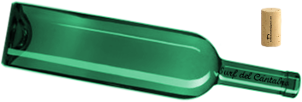
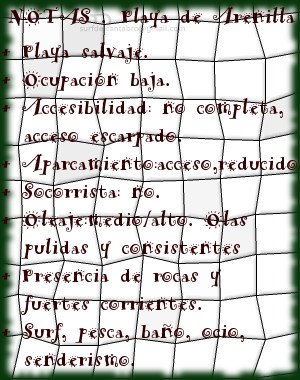
Arenilla beach. Galizano
![]() The Beach of Arenilla is placed in the locality of Galizano, belonging to the municipality of Ribamontán al Mar. Located on the central coast of Cantabria it is situated between the beaches of Langre and Galizano. It is an small cove that scarcely overcomes 100 meters of length, its width in low tide is 50 meters and remains totally covered with the high tide.
The Beach of Arenilla is placed in the locality of Galizano, belonging to the municipality of Ribamontán al Mar. Located on the central coast of Cantabria it is situated between the beaches of Langre and Galizano. It is an small cove that scarcely overcomes 100 meters of length, its width in low tide is 50 meters and remains totally covered with the high tide.
Arenila in its half contiguous to the Sea consists of thick sand, bodied, to the contact with the foot the steps are chewed. Its another half, placed under the cliff and with form of U, is replete with rocks piled up, rubbed by the sea, which allow on them one who walks skilfully. The right and top part of the cliff opens an improvised path between the rocks that comes up to Galizano’s beach. The left and top side communicates with Langre’s beach through an agricultural way. Its difficult location and stony access give sample of the wild nature of the cove.
The rocky wings of the cliff accumulate free rocks in their base, decorating its entry to the water. The strong currents demand good physical condition and the attention to avoid the wings, with a frontal wall of rock stratified in a side and in other one the circular currents of the contiguous beach; Langre. The frontal, placed in diminishing direction towards the cove, receives a right wave only suitable for experienced surfers. The central part, with its deep base of rock and covered by thick sand meters, creates a polished wave, which opens to both sides and, sometimes it overlaps a left wave turning itself into a right wave. Of good power and height, it moves the clean water and with the pace adapted to turn the navigation into the whole experience that could reflect for an instant the genuineness of the Cantabrian Sea and its coast.

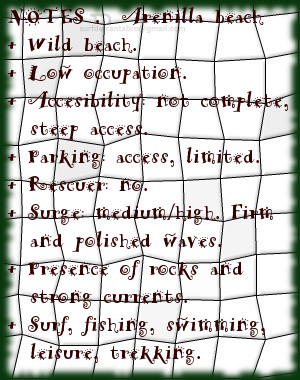
Tagle, playa
![]() La playa de Tagle, llamada Playa El Sable, se encuentra en la localidad de Tagle, perteneciente al municipio de Suances, en la costa occidental de Cantabria. El arenal de 200 metros de longitud y 50 metros de ancho, está precedido por un gran aparcamiento que es ocupado totalmente en la estación estival.
La playa de Tagle, llamada Playa El Sable, se encuentra en la localidad de Tagle, perteneciente al municipio de Suances, en la costa occidental de Cantabria. El arenal de 200 metros de longitud y 50 metros de ancho, está precedido por un gran aparcamiento que es ocupado totalmente en la estación estival.
La llegada a la playa de Tagle encuentra una cuesta con una pendiente suave, cada paso del caminante se ve ayudado por la inclinación. Poco a poco la zona aumenta su anchura para ir descubriendo la playa, sus laterales, las rocas dispersas dentro de sus aguas. El sonido del Mar Cantábrico, chocando con la Playa EL Sable, entona una melodía que expresa el carácter de la unión entre ambos. Música suave y atrayente ó violenta y natural, ambos estados registra la playa de Tagle.
Los laterales y fondo rocoso la convierten en una playa peligrosa para la práctica del surf. La zona hábil para navegar se encuentra alejada de la línea de costa, evitando las zonas rocosas y situada fuera de la ensenada que forma la playa con el entorno. Las rocas que restan en la zona constituyen la base de la prehistórica y ancestral costa. El efecto de la fuerza del oleaje y las grandes mareas han ido erosionando y afilando los acantilados que son los vestigios que ahora quedan, a modo de entorno rocoso.

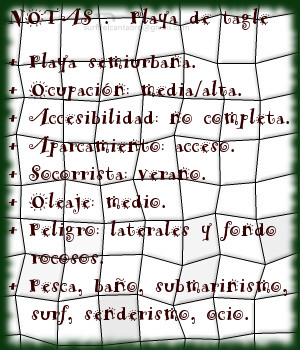
Tagle, beach
![]() Tagle’s beach, also called Beach El Sable, is in the locality of Tagle, belonging to the municipality of Suances, on the western coast of Cantabria. The sandbank of 200 meters of length and 50 meters of width, is preceded by a great parking which is totally occupied on the summer station.
Tagle’s beach, also called Beach El Sable, is in the locality of Tagle, belonging to the municipality of Suances, on the western coast of Cantabria. The sandbank of 200 meters of length and 50 meters of width, is preceded by a great parking which is totally occupied on the summer station.
The arrival to Tagle’s beach finds a slope with a soft slope, every step of the wayfarer meets helped by the inclination. Little by little the zone increases its width to discover the beach, its wings, the dispersed rocks inside its waters. The sound of the Cantabrian Sea, shocking the Beach El Sable, intones a melody that expresses the character of the union between them. Soft and attractive music or violent and natural, both conditions are register in Tagle’s beach.
The wings and bottom turn her into a dangerous beach for the practice of the surf. The skilful zone to sail is removed from the coast line, avoiding the rocky areas and placed out of the inlet that forms the beach with the environment. The rocks that remain in the zone constitute the base of the prehistoric and ancient coast. The effect of the force of the surge and the big tides have been eroding and sharpening the cliffs that are the vestiges that now stay, like rocky environment.

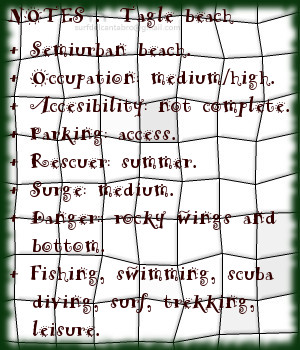
El Rosal, playa
![]() La playa El Rosal, también conocida como Tostadero, está situada en el municipio de San Vicente de la Barquera, en la costa occidental de Cantabria. Delimitada en su lado izquierdo por un espigón que separa el arenal de la Ría de San Vicente de la Barquera. Su longitud de 360 metros y anchura media de 60 metros disponen una pequeña área parcialmente protegida del oleaje.
La playa El Rosal, también conocida como Tostadero, está situada en el municipio de San Vicente de la Barquera, en la costa occidental de Cantabria. Delimitada en su lado izquierdo por un espigón que separa el arenal de la Ría de San Vicente de la Barquera. Su longitud de 360 metros y anchura media de 60 metros disponen una pequeña área parcialmente protegida del oleaje.
Cuenta, su espigón, con un pequeño faro en el extremo final. Este punto, situado a 150 metros de la orilla, es conocido como el Farolillo. La zona dispone de otro malecón natural, el Islote de Peña Menor, que cubre totalmente al primero. Estas barreras naturales que preservan a la zona del Mar Cantábrico y filtran el oleaje que hasta allí llega, junto con las características del entorno ayudan a producir unas ondas especiales que abren sus alas a lo ancho para llegar posteriormente hasta el arenal.
Cuando las series de olas salvan los espigones, nace una ola que abre a ambos lados. De pendiente suave y prolongada, aparecen recorridos medios a derechas. Sí las condiciones son favorables la apertura izquierda de la onda puede alcanzar un trayecto mayor. La superficie pulida del agua, el rizamiento de la ola y el desplazamiento prolongado de las elevaciones que transportan las ondas consiguen crear olas cuyos parámetros son sólo valores que, en conjunto y después de surfear, hablan de la naturaleza del Cantábrico en esta parte de Cantabria.

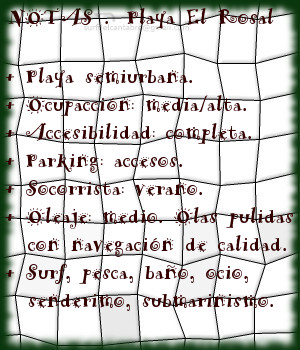
El Rosal, playa
![]() The beach El Rosal, also known as Tostadero, is placed in the municipality of San Vicente de la Barquera, in the western coast of Cantabria. Delimited in its left side for a breakwater that separates the sandbank of the Stuary of San Vicente de la Barquera. Its length of 360 meters and average width of 60 meters arrange an small area partially protected from the surge.
The beach El Rosal, also known as Tostadero, is placed in the municipality of San Vicente de la Barquera, in the western coast of Cantabria. Delimited in its left side for a breakwater that separates the sandbank of the Stuary of San Vicente de la Barquera. Its length of 360 meters and average width of 60 meters arrange an small area partially protected from the surge.
It counts,its dyke,with an small beacon in the final end. This point placed to 150 meters of the shore, is known as el farolillo. The zone has another natural levee, Peña Menor Islet, which covers totally to the first one. These natural barriers that preserve to the zone of the Cantabrian Sea and leak the surge that comes up to there, together with the characteristics of the environment help to produce a few special waves that open its wings widthways; and will arrive later up to the sandbank.
When the series of waves overcomes the levees, there is born a wave that opens to both sides. Of soft and long slope, a medium distance tours that open to the right appear. If the conditions are favorable the left opening of the wave can reach a major distance. The polished surface of the water, the curling of the wave and the long displacement of the elevations that transport the waves manage to create waves which parameters are only values that as a whole and after surfing speak about the nature of the Cantabrian Sea in this part of Cantabria.

